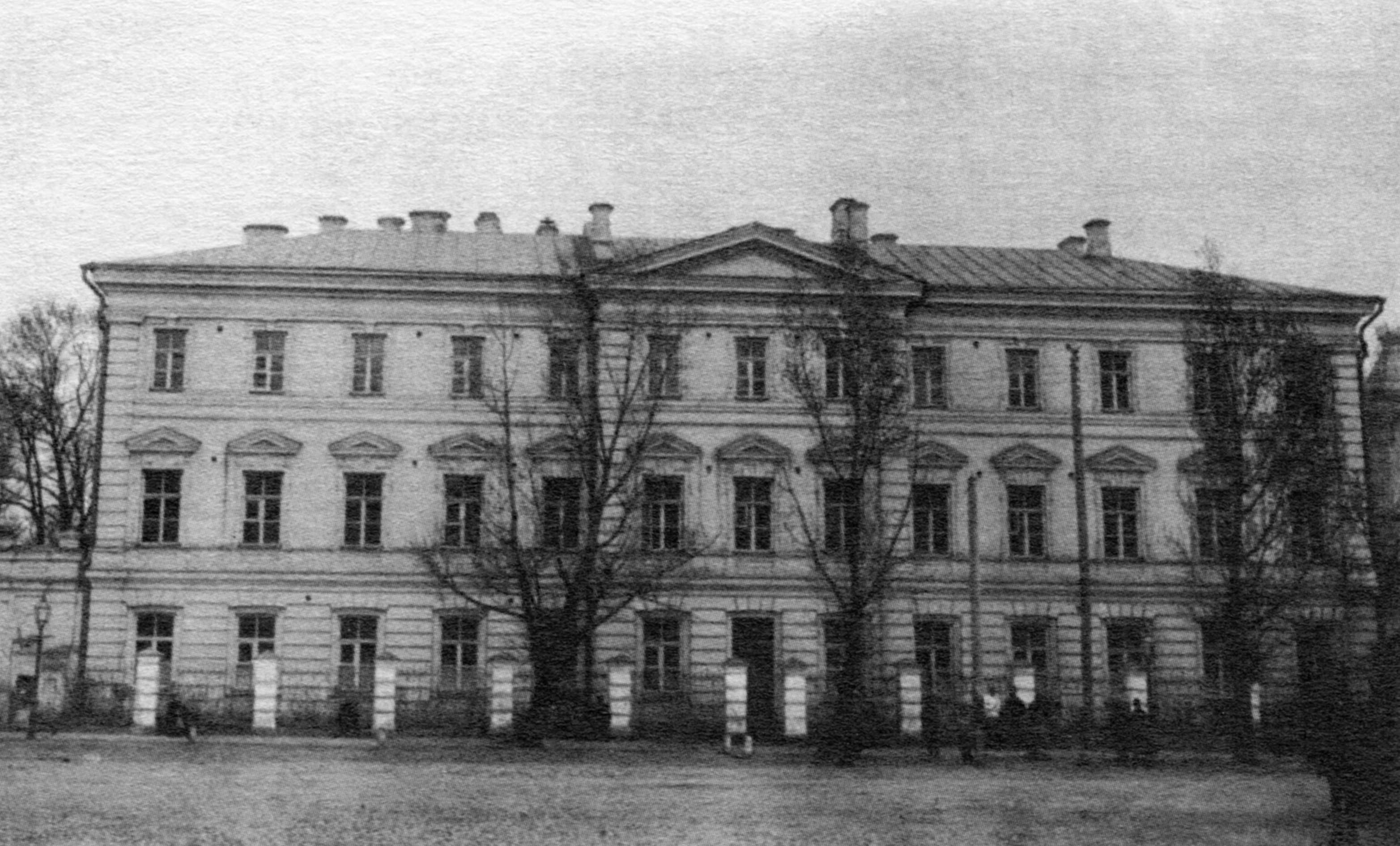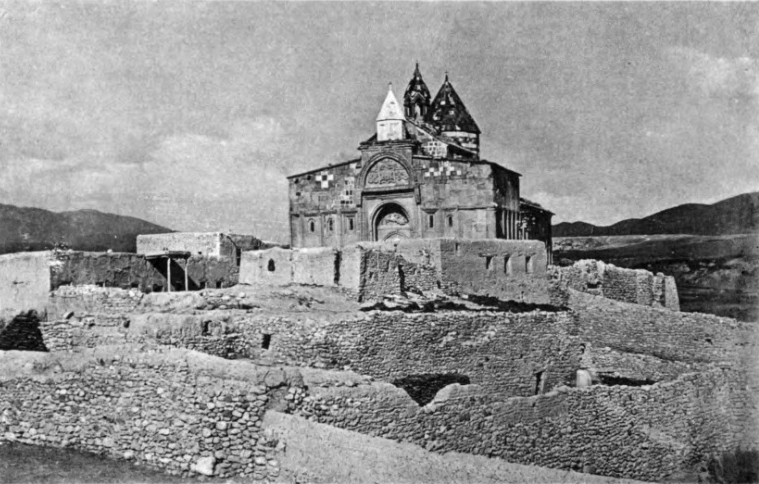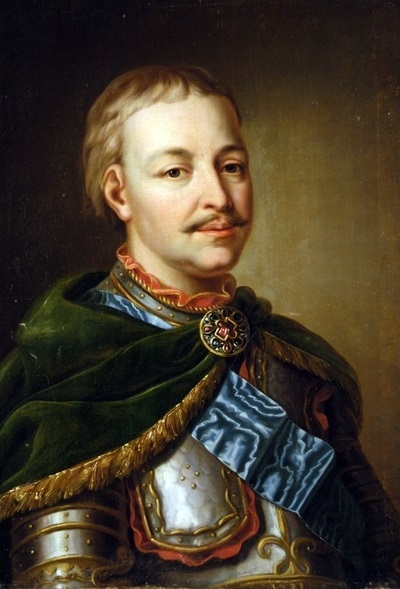|
Volhynian Orthodox Theological Academy
The Volhynian Orthodox Theological Academy (formerly the Volhynian Theological Seminary) is a higher educational institution with a six-year term of study that trains priests, workers of diocesan administrations and missions for the Orthodox Church in Ukraine. History 1795–1939 years On May 14, 1796, thanks to Volyn and Zhytomyr Bishop Barlaam Shyshatsky, the "Diocese Seminary" was opened, which later became the Volyn Seminary. This happened after the Volyn region was annexed by the Russian Empire under Catherine II in 1775. The mission of the seminary was to prepare candidates for priests for parishes that had switched from the Greek Catholic Church to the Orthodox Church. The seminary accepted Orthodox children (aged 7–15 years), who had previously studied in the Basilian and Jesuit schools in Ovruch, Mezhyrich, and Ostroh. Subsequently, the best students were sent to study at the Kyiv Theological Academy. The complex of buildings of the Volhynian Theological Seminary ... [...More Info...] [...Related Items...] OR: [Wikipedia] [Google] [Baidu] |
Barlaam (Shyshatsky)
Monk Barlaam (; secular name Gregory Stepanovich Shyshatsky, 12 March 1750, village Krasilovka, Kozeletskyy uezd, Chernigov province - 23 July 1820, Novgorod-Seversky) was a defrocked Archbishop of Mogilev and Vitebsk of the Russian Orthodox Church. During the French invasion of Russia he was accused of taking a loyalty oath to Napoleon, forcing junior clergymen to do the same, celebrating Napoleon's birthday and saying prayers for Napoleon instead of the tsar's family.Napoleon in Russia: Saviour or anti-christ? ''History Today'' (1991), vol. 41 After a long trial by the Most Holy Synod, Varlaam was found guilty, stripped of the rank and confined to a monastery. [...More Info...] [...Related Items...] OR: [Wikipedia] [Google] [Baidu] |
Russian Empire
The Russian Empire was an empire that spanned most of northern Eurasia from its establishment in November 1721 until the proclamation of the Russian Republic in September 1917. At its height in the late 19th century, it covered about , roughly one-sixth of the world's landmass, making it the list of largest empires, third-largest empire in history, behind only the British Empire, British and Mongol Empire, Mongol empires. It also Russian colonization of North America, colonized Alaska between 1799 and 1867. The empire's 1897 census, the only one it conducted, found a population of 125.6 million with considerable ethnic, linguistic, religious, and socioeconomic diversity. From the 10th to 17th centuries, the Russians had been ruled by a noble class known as the boyars, above whom was the tsar, an absolute monarch. The groundwork of the Russian Empire was laid by Ivan III (), who greatly expanded his domain, established a centralized Russian national state, and secured inde ... [...More Info...] [...Related Items...] OR: [Wikipedia] [Google] [Baidu] |
Kiev Theological Academy
The Kiev Theological Academy (1819—1919) was one of the oldest higher educational institution of the Russian Orthodox Church, situated in Kiev, then in the Russian Empire (now Kyiv, Ukraine). It was considered as the most senior one among similar academies in Moscow, Saint Petersburg, and Kazan. It was located at the Kiev Podol within the Kiev Epiphany Monastery. In the Russian historiography, the Academy′s predecessor was the Academia Mohileana that was founded earlier in the 17th century. History Predecessor Collegium Mohileanum in Kiev The Kiev Theological Academy traces its history back to 1615, when Yelisey Pletenetsky founded a school at the Brotherhood Monastery in Kiev. Several decades later, Peter Mohyla, from 1632 an Orthodox Metropolitan of Kiev under the Patriarchate of Constantinople, merged it with a newly established Lavra school into the Mohyla Collegium (Latin: Collegium Kijovense Mohileanum). The Collegium alumni include Innokentiy Gizel, Lazar Ba ... [...More Info...] [...Related Items...] OR: [Wikipedia] [Google] [Baidu] |
Ukrainian Autocephalous Orthodox Church
The Ukrainian Autocephalous Orthodox Church (UAOC; (UAPTs)) was one of the three major Eastern Orthodox churches in Ukraine in the late 20th and early 21st centuries, together with the Ukrainian Orthodox Church – Kyiv Patriarchate (UOC-KP) and the Ukrainian Orthodox Church – Moscow Patriarchate (UOC-MP). It began in 1921 during the dissolution of the Russian Empire as part of the Ukrainian independence movement and in order to restore the Ukrainian Orthodox Church that existed in the Polish-Lithuanian Commonwealth in 1620–1685 and was annexed by the Moscow Patriarchate without approval of the Ecumenical Patriarchate of Constantinople. The UAOC came to an end in December 2018 as it united with the UOC-KP into the newly formed Orthodox Church of Ukraine (OCU). The UAOC, in its contemporary form, has its origins in the synod of 1921 in Kyiv, shortly after Ukraine's newly found independence. It was re-established for the third time on 22 October 1989, right before the f ... [...More Info...] [...Related Items...] OR: [Wikipedia] [Google] [Baidu] |
World War II
World War II or the Second World War (1 September 1939 – 2 September 1945) was a World war, global conflict between two coalitions: the Allies of World War II, Allies and the Axis powers. World War II by country, Nearly all of the world's countries participated, with many nations mobilising all resources in pursuit of total war. Tanks in World War II, Tanks and Air warfare of World War II, aircraft played major roles, enabling the strategic bombing of cities and delivery of the Atomic bombings of Hiroshima and Nagasaki, first and only nuclear weapons ever used in war. World War II is the List of wars by death toll, deadliest conflict in history, causing World War II casualties, the death of 70 to 85 million people, more than half of whom were civilians. Millions died in genocides, including the Holocaust, and by massacres, starvation, and disease. After the Allied victory, Allied-occupied Germany, Germany, Allied-occupied Austria, Austria, Occupation of Japan, Japan, a ... [...More Info...] [...Related Items...] OR: [Wikipedia] [Google] [Baidu] |
Lutsk
Lutsk (, ; see #Names and etymology, below for other names) is a city on the Styr River in northwestern Ukraine. It is the administrative center of Volyn Oblast and the administrative center of Lutsk Raion within the oblast. Lutsk has a population of A city with almost a thousand years of history, recorded in 1085, Lutsk historically served as an administrative, cultural and religious center in Volhynia. The city contains several landmarks in various styles, including Renaissance architecture, Renaissance, Baroque architecture, Baroque and Neoclassical architecture, Neoclassical, the most known being the medieval Lubart's Castle. Names and etymology Lutsk is an ancient Slavic peoples, Slavic town, mentioned in the Hypatian Chronicle as Luchesk in the records of 1085. The etymology of the name is unclear. There are three hypotheses: the name may have been derived from the Old Slavic word ''luka'' (an arc or bend in a river), or the name may have originated from ''Luka'' (the chi ... [...More Info...] [...Related Items...] OR: [Wikipedia] [Google] [Baidu] |
Bartholomew (Vashchuk)
Bartholomew was one of the twelve apostles of Jesus according to the New Testament. Most scholars today identify Bartholomew as Nathanael, who appears in the Gospel of John (1:45–51; cf. 21:2). New Testament references The name ''Bartholomew'' (, transliterated "Bartholomaios") comes from the ''bar-Tolmay'' "son of Tolmai" or "son of the furrows". Bartholomew is listed in the New Testament among the Twelve Apostles of Jesus in the three Synoptic Gospels: Matthew, Mark, and Luke, and in Acts of the Apostles. Tradition Eusebius of Caesarea's ''Ecclesiastical History'' (5:10) states that after the Ascension, Bartholomew went on a missionary tour to India, where he left behind a copy of the Gospel of Matthew. Tradition narrates that he served as a missionary in Mesopotamia and Parthia, as well as Lycaonia and Ethiopia in other accounts.''Encyclopædia Britannica'', Micropædia. vol. 1, p. 924. Chicago: Encyclopædia Britannica, Inc., 1998. . Popular traditions say that Bartholo ... [...More Info...] [...Related Items...] OR: [Wikipedia] [Google] [Baidu] |
Ukrainian Orthodox Church - Kyiv Patriarchate
Ukrainian may refer or relate to: * Ukraine, a country in Eastern Europe * Ukrainians, an East Slavic ethnic group native to Ukraine * Demographics of Ukraine * Ukrainian culture, composed of the material and spiritual values of the Ukrainian people * Ukrainian language, an East Slavic language of the Indo-European language family, spoken primarily in Ukraine * Ukrainian cuisine, the collection of the various cooking traditions of the people of Ukraine See also * Languages of Ukraine * Name of Ukraine * Religion in Ukraine * Ukrainians (other) * Ukraine (other) * Ukraina (other) * Ukrainia (other) Ukrainia may refer to: * The land of Ukraine * The land of the Ukrainians, an ethnic territory * Montreal ''Ukrainia'', a sports team in Canada * Toronto ''Ukrainia'', a sports team in Canada See also * * Ukraina (other) * Ukraine (d ... * {{disambiguation Language and nationality disambiguation pages ... [...More Info...] [...Related Items...] OR: [Wikipedia] [Google] [Baidu] |
Orthodox Church Of Ukraine
The Orthodox Church of Ukraine (; OCU), also called the Ukrainian Orthodox Church, is an Eastern Orthodox Church in Ukraine. It was granted autocephaly by the Ecumenical Patriarch of Constantinople on . Some of the Eastern Orthodox Churches recognize the Orthodox Church of Ukraine as the only canonical successor of the Metropolis of Kyiv, while the Catholic Church recognizes the Ukrainian Greek Catholic Church as the only canonical successor. The church was established under the ecclesiastical jurisdiction of the Ecumenical Patriarchate of Constantinople by a unification council that convened in Kyiv on 15 December 2018, following which Ecumenical Patriarch Bartholomew I granted it a tomos of autocephaly. The unification council united the Ukrainian Orthodox Church – Kyiv Patriarchate and the Ukrainian Autocephalous Orthodox Church into the OCU. Two bishops formerly of the Ukrainian Orthodox Church (Moscow Patriarchate) (UOC-MP) also joined. The unification council e ... [...More Info...] [...Related Items...] OR: [Wikipedia] [Google] [Baidu] |
1796 Establishments In The Russian Empire
Events January–March * January 16 – The first Dutch (and general) elections are held for the National Assembly of the Batavian Republic. (The next Dutch general elections are held in 1888.) * February 1 – The capital of Upper Canada is moved from Newark to York. * February 9 – The Qianlong Emperor of China abdicates at age 84 to make way for his son, the Jiaqing Emperor. * February 15 – French Revolutionary Wars: The Invasion of Ceylon (1795) ends when Johan van Angelbeek, the Batavian governor of Ceylon, surrenders Colombo peacefully to British forces. * February 16 – The Kingdom of Great Britain is granted control of Ceylon by the Dutch. * February 29 – Ratifications of the Jay Treaty between Great Britain and the United States are officially exchanged, bringing it into effect.''Harper's Encyclopaedia of United States History from 458 A. D. to 1909'', ed. by Benson John Lossing and, Woodrow Wilson (Harper & Brothers, 1910) p171. * March 9 – Widow J ... [...More Info...] [...Related Items...] OR: [Wikipedia] [Google] [Baidu] |
Volyn Oblast
Volyn Oblast () or simply Volyn (), is an administrative divisions of Ukraine, oblast (province) in northwestern Ukraine. It borders Rivne Oblast to the east, Lviv Oblast to the south, Poland to the west and Belarus to the north. Its Capital city, administrative centre is Lutsk. Kovel is the westernmost town and the last station in Ukraine on the rail line running from Kyiv to Warsaw. The population is History Volyn was once part of the Kievan Rus' before becoming an independent local principality and an integral part of the Kingdom of Galicia–Volhynia, one of Kievan Rus' successor states. In the 15th century, the area came under the control of the neighbouring Grand Duchy of Lithuania, in 1569 passing over to Poland and then in 1795, until World War I, to the Russian Empire where it was a part of the Volhynian Governorate, Volynskaya Guberniya. In the interwar period, most of the territory, organized as Wołyń Voivodeship (1921–1939), Wołyń Voivodeship was under Secon ... [...More Info...] [...Related Items...] OR: [Wikipedia] [Google] [Baidu] |







